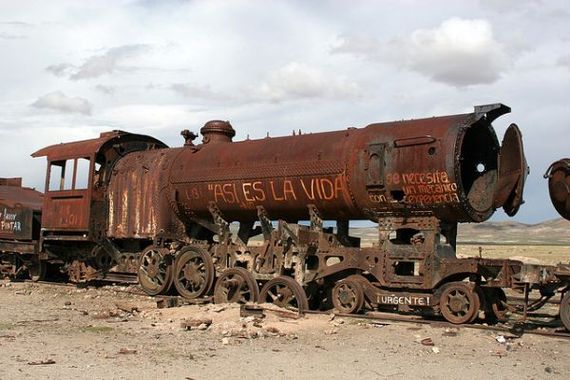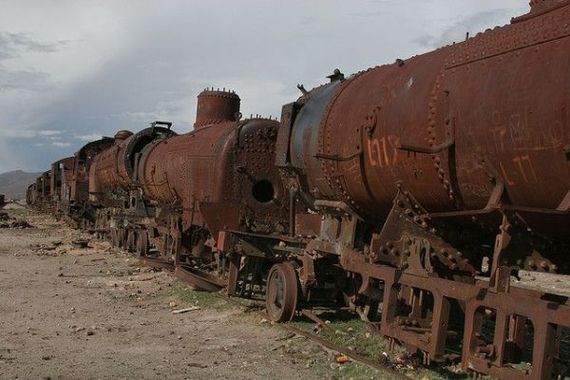High on the Andean Plateau two miles outside the Bolivian city of Uyuni, these forgotten steam locomotives make up one of the most impressive train graveyards on earth. Originally built to serve an ambitious rail network that never quite came to fruition, the strange collection of railway relics has become a must-see destination for those exploring the world's largest salt flats.

(All images by Josh Newman, cc-4.0)
The story began in the late 19th century. During that period, railway engineers from the U.K. flocked to Uyuni, journeying thousands of miles from their homeland to build a railway line from the Pacific to La Paz.
In his book Ghost Train through the Andes, author Michael Jacobs tells of how Bolivia's then-president, Aniceto Arce, saw a modern transport network as the key to his country's prosperity, transforming Bolivia into a 'land of the future'.
And so, under the auspices of the British-founded Antofagasta and Bolivia Railway Company (now FCAB), work commenced in 1888 and the line reached Oruro by 1892.
But President Arce's vision of progress was not shared by the local indigenous population. Seeing the railway as an intrusion into their way of life, they sabotaged its construction at every opportunity.
When the line did finally open, it served mainly freight traffic for local mining companies, which ground to a halt in the 1940s when the mining industry collapsed due to mineral depletion.
Many abandoned locomotives of the Antofagasta and Bolivia Railway Company have remained idle on their original tracks ever since, stockpiled for no apparent purpose, their corroded shells lashed by salt winds.
Its proximity to the city has made the train cemetery a de facto tourist attraction. But only time will tell whether this important chapter in Bolivia's industrial history will be saved from the desert extremes and the hands of souvenir hunters.

